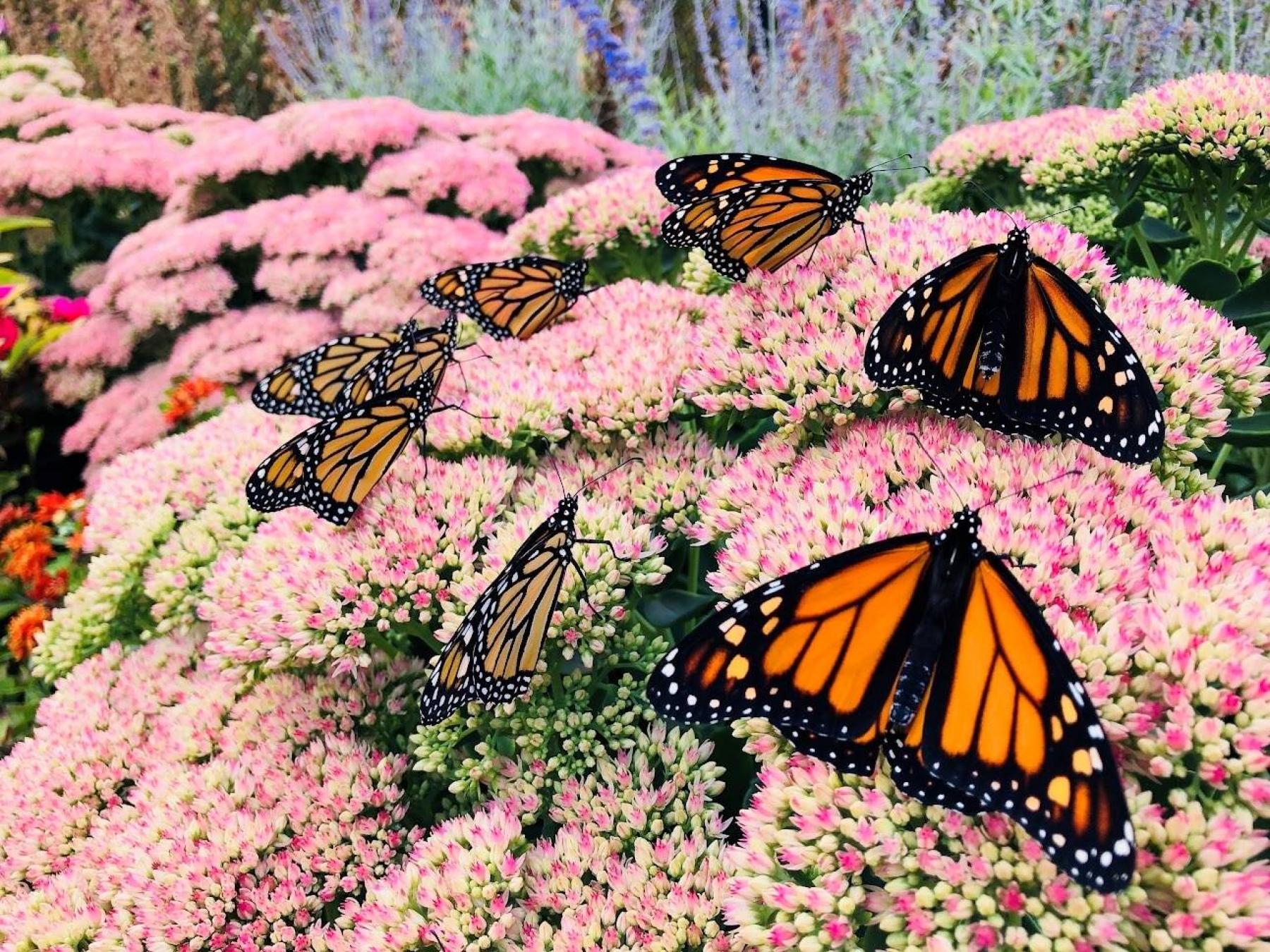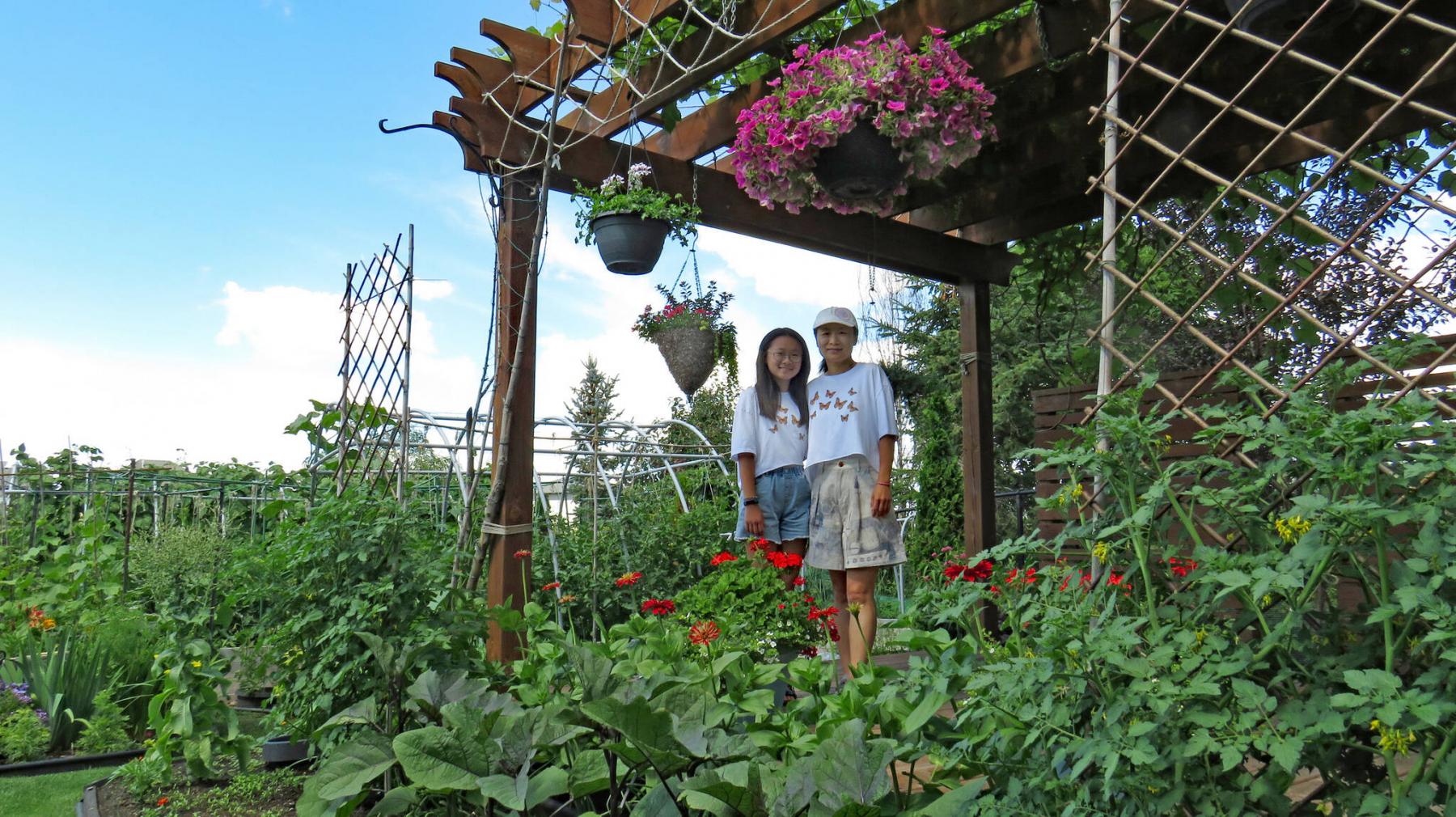
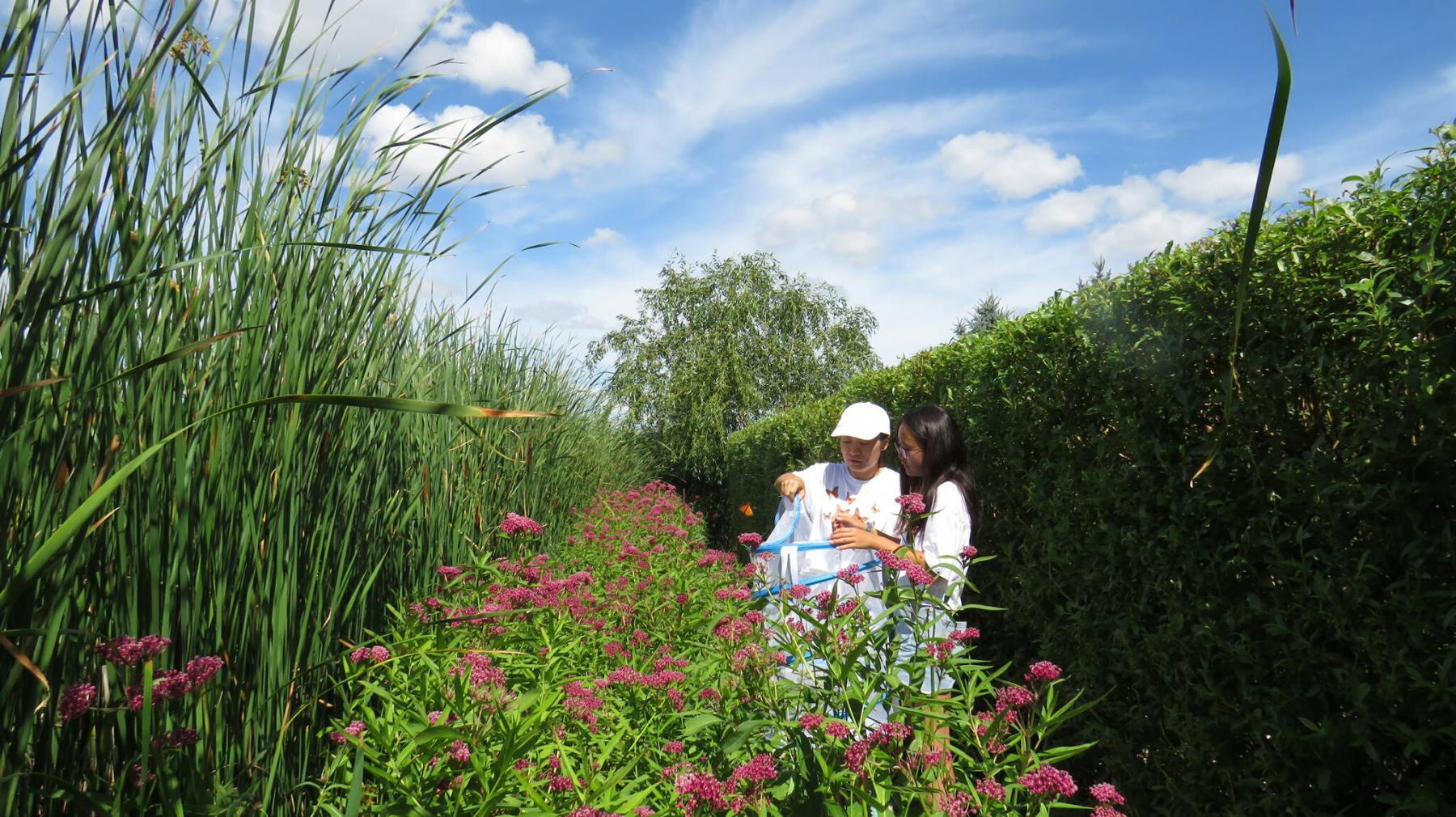
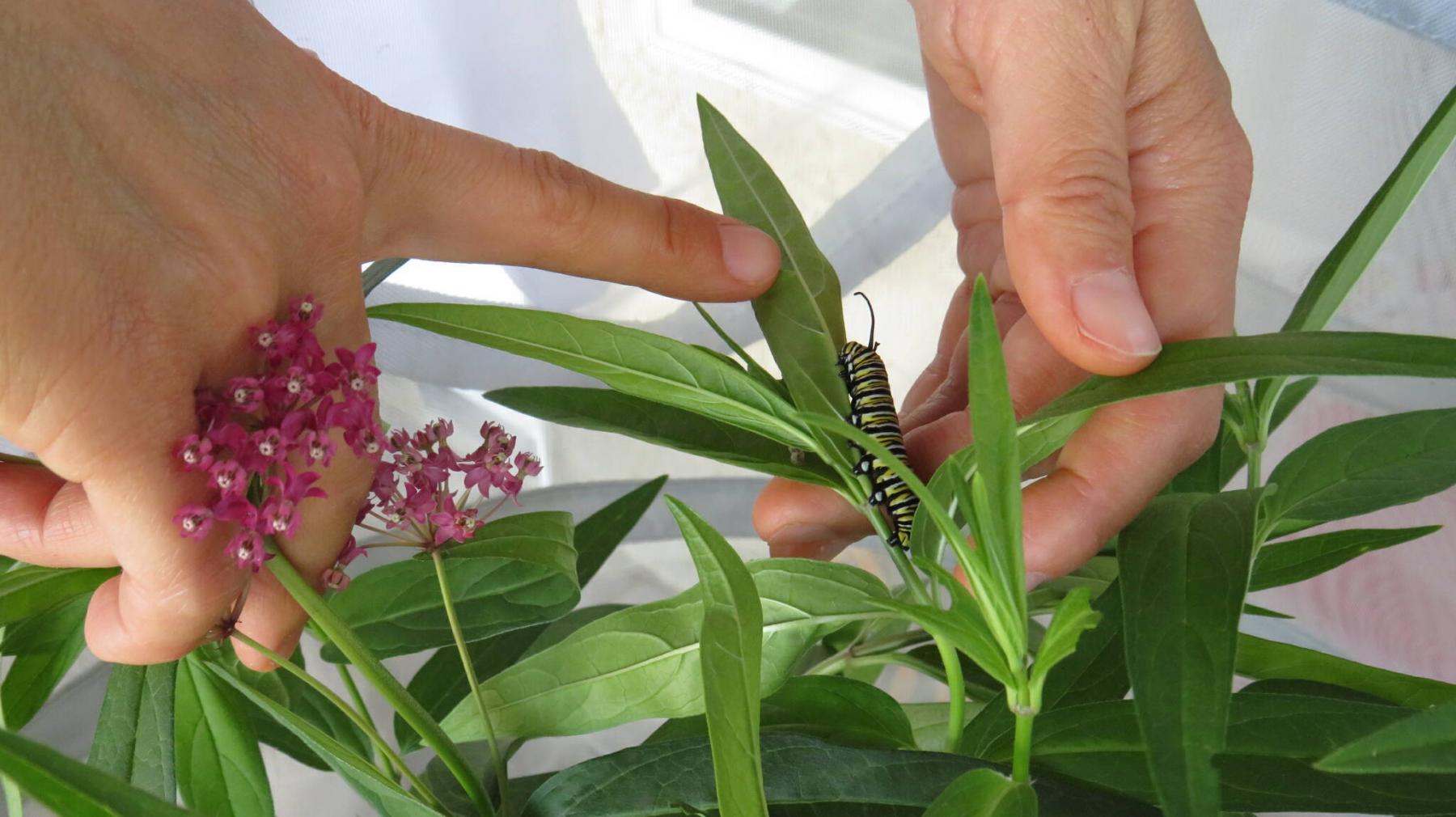
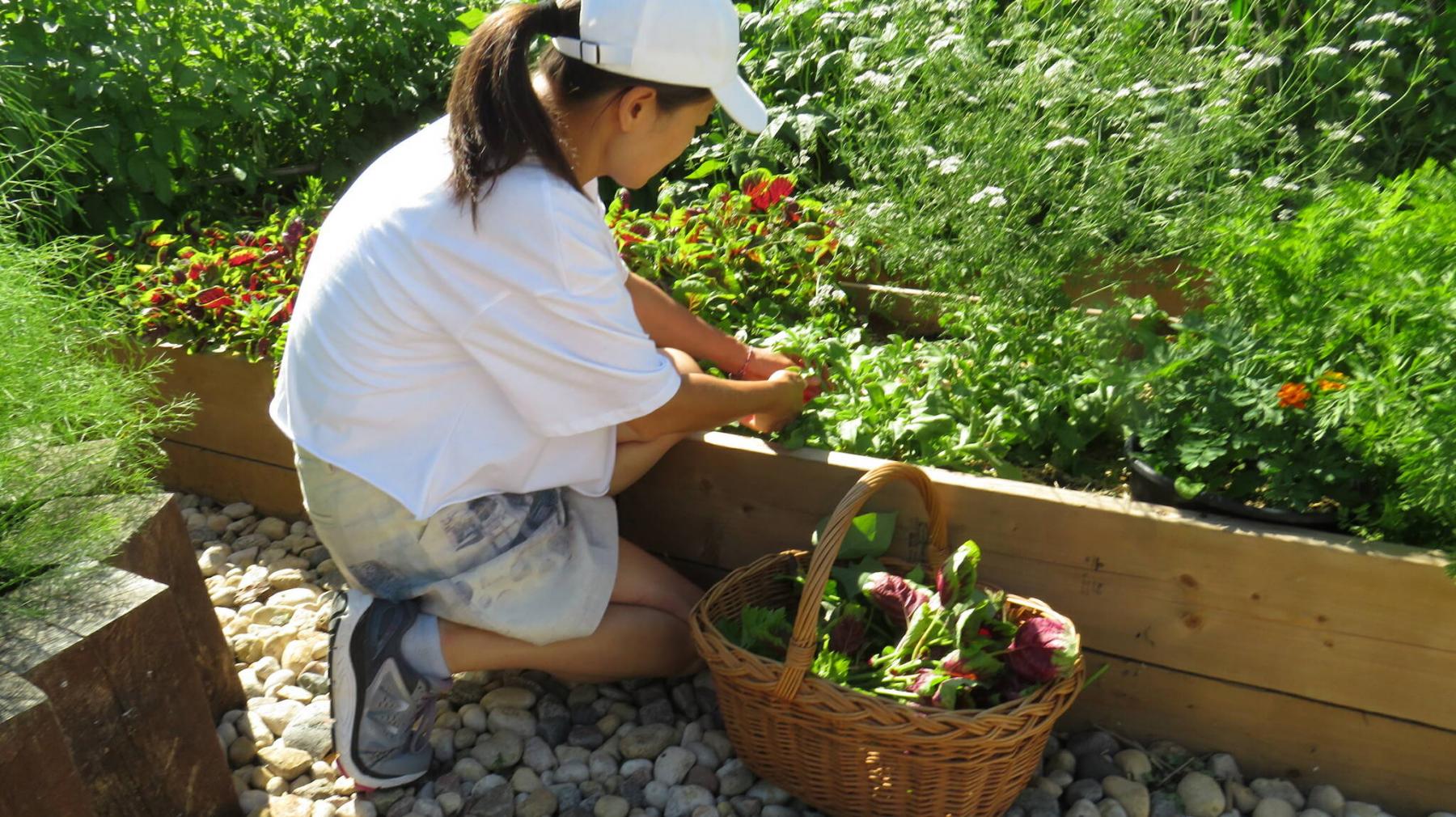
August is a critical month for the Monarch butterfly. While several generations of monarch butterflies are typically born during the summer months, it is the generation of monarchs born in August that will migrate in fall from much of southern Canada to overwinter in southern U.S. and Mexico. Their long journey can be as much as 5,000 km. At a time when monarch butterflies have been classified as endangered and added to the red list of threatened species by the International Union for Conservation of Nature, greater action is needed to protect the species.
Yan Cong dedicates her summer each year to protecting and sustaining the monarch butterfly. Every member of her three-generation household participates. Together, their extraordinary efforts extend beyond growing milkweed plants for monarchs but let’s begin there.
At first glance, it is evident that the many flower beds in Cong’s backyard which are planted with milkweed and a diverse mix of nectar plant species provide both a food source for monarch butterfly larvae and adult butterflies as well as numerous other pollinators. Cong’s South Pointe property slopes gently towards a large retention pond. A grassy area that could rival the lush green fairways of the most well-conditioned golf course leads the visitor through the multiple layers of flower beds and raised vegetable gardens to a terraced level that is accessed through a wooden, vine-covered trellis. I really didn’t expect what I was about to see.
At the bottom of the terrace is a gate flanked on either side by a tall, dense hedge of willow that Yan’s mother keeps meticulously pruned and shaped. The long hedge fully conceals an exclusive garden for monarch butterflies – 130 feet (39 meters) of milkweed plants. A narrow granite path runs between the swamp milkweed with its rose-purple flowers and the willow hedge. On the other side of the milkweed, a tall, dense, continuous wall of bulrushes that grow along the edge of the retention pond act as a windbreak. That is significant since high winds can make it difficult for butterflies to land. This secret garden created especially for monarch butterflies is 130 feet of pure magic. The development of the garden has everything to do with the monarch butterfly’s journey but Cong’s own personal journey as well.
Twenty-four years ago, Cong moved to Canada from northwest China to study at the University of Manitoba. Today she works at Travel Manitoba. She and her husband and their daughter, Eva, who is 11, along with Cong’s parents, started gardening after purchasing their home in South Pointe. It was when they went to the Monarch Butterfly Festival at Living Prairie Museum in 2014, that the family first became interested in protecting monarchs by providing habitat in their backyard.
“The challenge was that we knew nothing about gardening,” says Cong. “We lived in apartments because not too many people have gardens in China. We had a lot of houseplants, that was about it.”
Cong says that it is her belief that for someone to protect nature they must first fall in love with it. “If people love nature, then they will protect it from their heart,” she says. “For our family, it started with one monarch butterfly and the realization that doing one little thing would not be enough to save the species. Otherwise, my daughter Eva’s children are not going to be able to see a monarch butterfly. That’s what I realized when I took her to the Monarch Butterfly Festival for the first time when she was three.”
Cong began by doing research about the monarch butterfly and its life cycle. She learned to identify the different stages of the butterfly as well as its eggs. The family created garden beds with plants that would provide butterflies with a nectar source starting in spring through to fall. In addition to planting swamp milkweed – they started out with 30 to 40 plants — Cong and her family also planted flowering perennials such as Amaranthus, Echinacea coneflower, yarrow, monarda, obedient plant, Liatris meadow blazing star, speedwell, false sunflower, sedum, and Joe Pye Weed.
“We made many mistakes in the beginning,” says Cong, “but we learned from our mistakes.”
Eva learned to identify monarch butterfly eggs on the undersides of milkweed leaves and Cong began raising monarch butterflies at home. On my visit, a male monarch — identified by the two black spots in the centre of its hind wings – had emerged from its chrysalis and was ready for release. The butterfly was inside a laundry hamper with soft mesh sides, carry handles, and a mesh top with zipper enclosure. “When monarchs first emerge from their chrysalides,” she says, “their abdomens are filled with a fluid called meconium which the adult monarch pumps into the wings. The wings become large but they are soft so the monarch has to dry its wings for a few hours before it can be released. It is safe to keep the monarch for 24 hours but then it has to be freed.” Cong showed me eggs, caterpillars, as well as some chrysalides.
Cong and her family enjoy observing the behaviour of monarch butterflies in their garden. It is important to understand and respect their behaviour, she says, but it’s also entertaining. “We sometimes see six or seven butterflies fighting with one another. The male monarchs are very territorial. When they find a nice milkweed patch, they treasure it and chase away other males. I have even seen them chase away birds. They chase us.” Cong is fascinated by how the female monarch decides which is the best milkweed leaf to lay its eggs on. The females have taste buds at the end of their tongues and sensory structures on their feet which help them to identify plants.
“This has not been a great year for butterflies,” says Cong. “Normally we would have many more butterflies in our garden.”
Today Cong’s garden is a certified monarch butterfly waystation. It has a backyard wildlife habitat designation from the Canadian Wildlife Federation. Cong reports the arrival of monarch butterflies each spring at journeynorth.org. She is a volunteer event coordinator at Winnipeg Chinese Senior Association (WCSA) which has 500 members and shares hundreds of packets of seed that she collects each year from milkweed and perennials that are good nectar sources.
“My goal is to inspire as many people as possible to get involved in this protection effort,” says Cong who volunteers hundreds of hours with WCSA organizing events and creating webinars.
“Monarch protection is much broader than protecting an endangered species,” says Cong. “It’s important to grow organically and not use pesticides. Learning how to protect the environment has inspired me to learn more about healthy eating and nutrition and has also influenced my purchasing decisions. Cong grows more than 50 varieties of vegetables, fruits, and herbs in her garden. Canning and preserving food as well as saving seed from the plants she grows is a driving force that has enriched and enhanced Cong’s life.
“Our garden is about family time and sharing with the community,” says Yan. It started with one butterfly.
colleenizacharias@gmail.com

